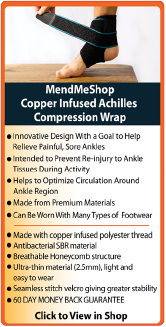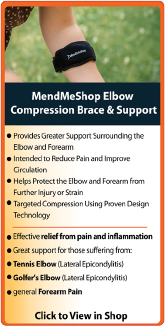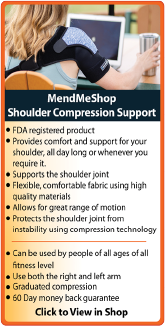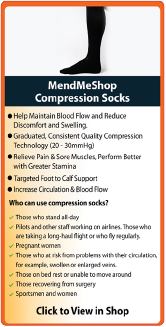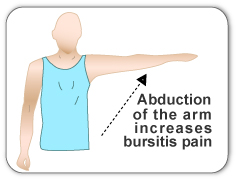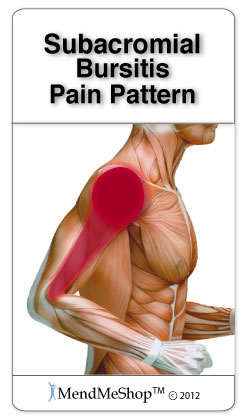FeverIf your bursitis is caused by an infection in the bursa (septic bursa) you will usually experience a fever. If you are experiencing tenderness, warmth, and redness around the bursa, it is recommended that you see a doctor for medication to get rid of the infection. Limited Range of Motion and WeaknessWhen you have subacromial bursitis, the pain often limits your range of motion in the shoulder as you stop performing motions that make the pain worse. If bursitis is left untreated the inflammation can increase, causing more pain, limiting movement even more. Eventually weakness in the shoulder muscles and tendons can set in. Difficulties SleepingPatients suffering from shoulder bursitis may also have interrupted sleep patterns. Simply rolling over on the affected shoulder during the night can cause pressure on the inflamed bursa increasing the pain at the pressure point. The pain can range from mild to very sharp depending on the amount of inflammation in your shoulder. Tenderness and SwellingA physical examination of your shoulder will show tenderness and usually warmth and swelling of the bursa and possibly the tendons as well. The tenderness will appear over the outside (lateral) shoulder and the subacromial space. There may be redness on your skin over the area. It is important to treat bursitis to reduce these symptoms, minimize damage and maintain rotator cuff motion and strength. Without proper care, you may experience other painful conditions such as calcific tendonitis, frozen shoulder or a rotator cuff tear. By treating your shoulder bursitis in the early stages, you are more likely to prevent long-term damage and chronic conditions from setting in. 1: Bursitis Sufferers Continue to Aggravate & Re-Injure Their BursaIt goes without saying that anyone suffering from bursitis should want to minimize their chance of worsening the injury, or re-injuring the bursa once it has started to get better. Obviously, a worsening injury will delay the healing process, but what's worse is that every re-injury and additional healing cycle increases the amount of time that your joint is immobilized. Time is not kind to an immobilized joint - you lose strength in the joint but worse than that, you lose the range of motion in your joint via atrophy (your flexible tendons, muscles and ligaments slowly shrink, decreasing joint elasticity). The more time that goes by with an immobile joint, the more likely you will wind up with a chronic joint problem (long term injury such as tendonitis or persistent bursitis pain). Basically it means that your joint will not perform as well as it once did and it becomes more prone to injury again later on. If you have an inflamed bursa in one of your joints, it's very important to heal it quickly and completely. Minimizing the healing time of your bursitis should be an obvious goal, as bursitis typically limits your ability to go about your daily routine. As stated here (MedicineNet.com), if your long-term (chronic) bursitis is left untreated, calcium deposits can form within the bursae. These calcium deposits can lead to permanent stiffness in the affected joint. 2: Visits to Physio (PT) Help - We Always Recommend It - But It Can Be Costly And InconvenientWhile the benefits of PT are very real and we believe it to be integral for recovery from soft tissue injuries, the problem is that people only attend sessions a few times a week. To truly provide a long term solution to combat bursitis induced soft tissue damage, you need to be receiving multiple treatments on a daily basis and get rid of your bursitis asap. Not just any type of treatments, but ones that focus on generation of new healthy tissue - along with proper synthesis of that tissue as well. Treatments for soft tissue injuries are cumulative in nature...meaning the more the treatments are administered, the faster the benefits can be experienced. Who these days has time to visit a clinic on a daily basis? Not only is your time limited, but the cost of daily PT sessions is out of reach for most people. Therefore, the focus needs to be on adding treatment options that can be done frequently, from the comfort of your own home (and even the workplace if the opportunity presents itself). We will discuss these options later on down the page. 3: People Tend To Focus Too Much On Cold TreatmentsThis is the final reason for extended bursitis and soft tissue injuries. We see it all the time - people for weeks and even months only focus on using cold. Doing too much cold will actually inhibit the recovery because you are starving the injured tissues of the blood flow they need to repair and rebuild the collagen. Cold restricts the vessels - reducing the blood flow to the tissues that truly need it most. Cold treatments should be more focused on in the earliest stages of an injury with much less focus in the mid and latter stages.The truth is, there will always some mild inflammation associated with tissue injuries. However, some of that inflammation will remain UNTIL you begin to focus on healing the soft tissue (muscle). Once this begins to heal, the inflammation will then subside more permanently - not just temporarily like with cold treatments. As an analogy, think of a home with a leaky roof. You can place a bucket on the floor of the attic whenever it rains - and this will help temporarily, but does it truly address the situation? Obviously the answer is no. Not until you focus on repairing the structural issues with the roof - will the problem be actually solved. The same concept applies to injured soft tissue - you need to focus on reinforcing growth of flexible, strong tissue. To do this, you need more blood flow reaching them, not less. 4: Injections Can Cause Harm If You Are Not CarefulThis can be VERY helpful in alleviating pain and when it comes to bursitis, pain relief alone can make a huge difference. However, some people get a false sense that their injury is healed because they are not experiencing the pain they once did. Some individuals even engage in activities they should not be doing because they "no longer feel pain". Once the effects wear off, people often find their bursitis persists . This of course, results in a prolonged recovery. Be very careful about your activity after the injection because there is little, if any, pain feedback to tell you that you're overdoing it. Merely masking the pain can be very helpful temporarily, but it is not a solution; it is just a temporary fix. The Key Points To Keep in Mind When Treating Your InjuryMake Sure That Complete Healing is Your #1 GoalWe all know that if the injury was healed, the pain would go away but what about the opposite situation? If the pain is gone, does that mean the injury is better? Unfortunately, this is not always true. Too many people only focus on suppressing pain symptoms while providing less attention to the true healing aspects of the body. Experiencing less pain, while obviously a good short-term goal, does not equate to underlying healing. Scar tissue can remain for months after one gets to a point of being relatively pain-free. However, as long the weak and brittle scar tissue remains, you are susceptible to re-injury or re-aggravation. Certain motions or movements can cause the weaker tissue to easily tear - resulting in some reversal of the recovery up until that point. This is why we recommend for people to continue with their doctor or PT recommended exercises and to continue with mild treatments of the TShellz Wrap® for a period of time - to better ensure complete recovery. Ongoing treatments to enhance circulation are intended to soothe, relax and stimulate the body's ability to heal damaged tissue. T•Shellz treatments also result in the ability of soft tissue to extend further due to the effect of heat on soft tissue. As your muscles and tendons become longer, the pressure they exert on your bursa will decrease - thus reducing the aggravation and friction on your bursa. Further to this, longer and more flexible muscles are less likely to strain or sprain - further reducing your risk of new, secondary injury complications due to bursitis. Resting Will Help, But Only TemporarilyPeople tell us all the time, "I was told that if I stay off my feet for a few weeks, my pain will disappear for good." The truth is, bursitis will often arise due to a culmination of numerous factors such as alignment issues, poor posture, acute injuries and overcompensation issues resulting from other muscle and soft tissue ailments. It may take weeks or months for these pain triggers to surface. When they , however, merely resting will solve the underlying issues. You need to utilize actions and options that actually treat the source of the pain and help reverse the damage that has been done. Resting has a role to play, but it is only one small factor in a recovery plan. What Do I Need for Effective Shoulder Bursitis Home Treatments?If you are unsure about whether you need surgery for your bursitis, you may want to read through our "Do I Need Surgery" Page, here. Learn More About Bursitis Injuries & TreatmentsI want to learn more about Post-Surgery Recovery I want to learn more about TShellz Wrap® Circulatory Boost I want to learn more about Ice & Heat: Which Is Better For Treatment? I want to learn more about Bursitis Treatments I want to learn more about Bursitis Surgery FREE SHIPPING ON ALL PRODUCTS CURRENTLY ENABLED |
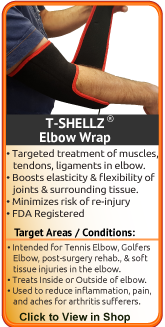  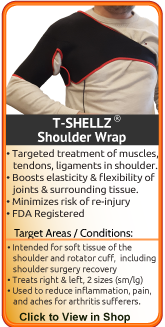 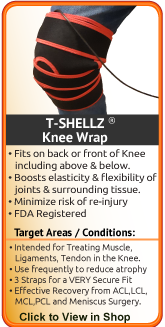 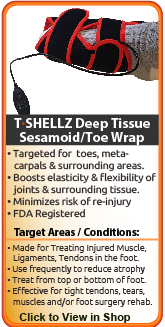  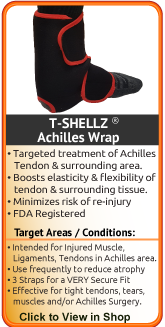 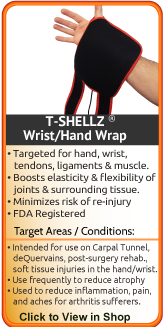 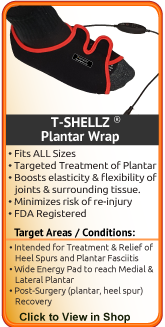  |

